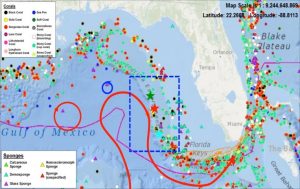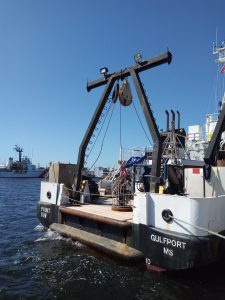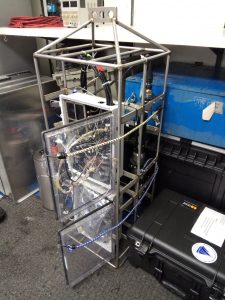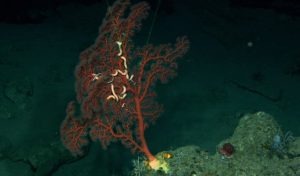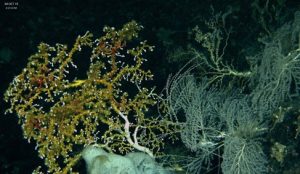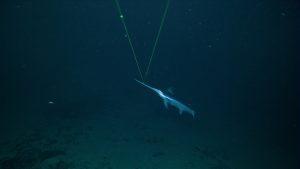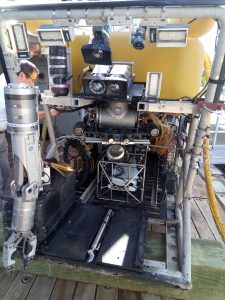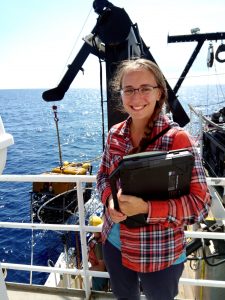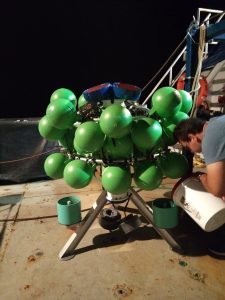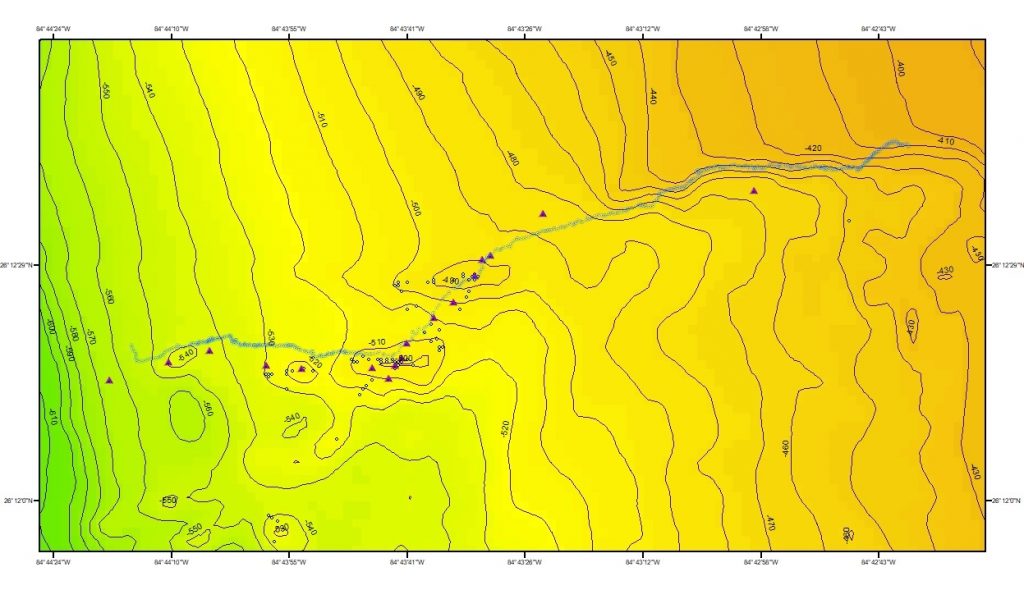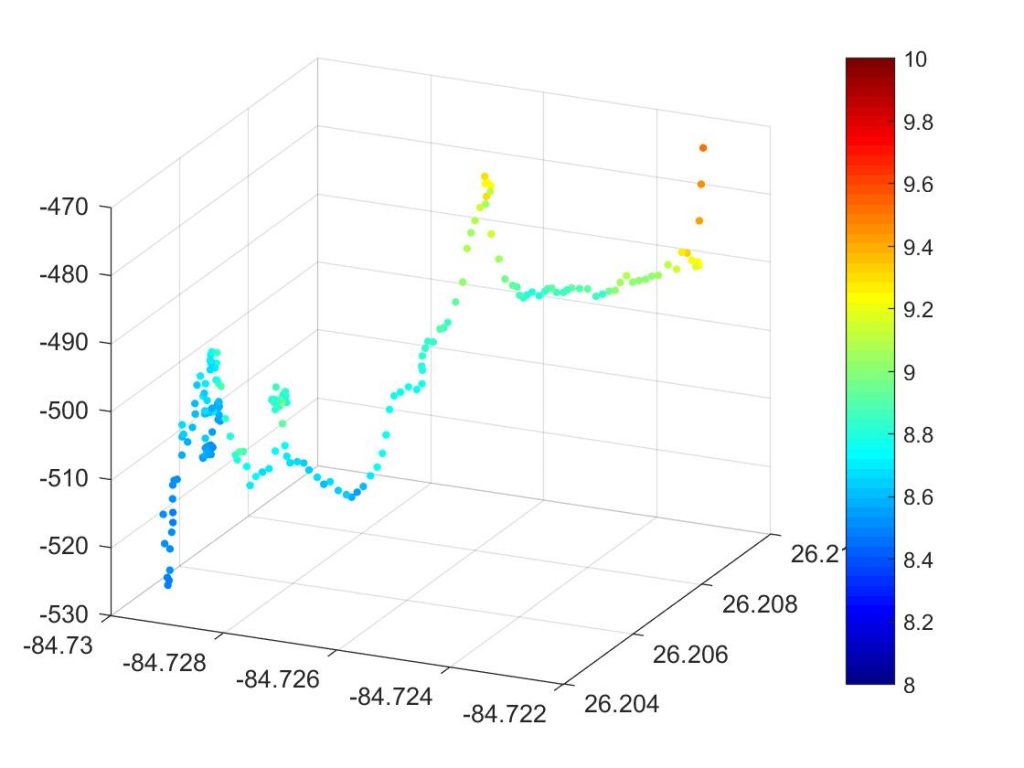Carbon Chemistry in Deep Sea Coral Ecosystems
Deep sea coral reefs are found on bathymetric highs with elevated currents and support highly dynamic ecosystems that may be impacted by ocean acidification (OA), warming, deoxygenation, and circulation changes. Deep sea corals living in the 400-800m depth range are typically situated in oxygen minimum zones of high CO2 and low pH where aragonite saturation may be near corrosive: rising temperatures and CO2 concentrations may increase physiological stress on coral communities, resulting in reduced suitable habitats for the corals and the fish and benthic communities they support. However, these ecosystems are located in hydrodynamically active areas that may already experience significant variations in currents, temperature, and carbonate chemistry due to tides, meandering boundary currents, and mesoscale eddies. If these reefs already experience extremes in carbonate chemistry due to such physical characteristics, they may be relatively resilient to chemical changes resulting from OA. Exploration and characterization of these sites is therefore necessary to establish a baseline of biogeochemical conditions and to investigate changes in biogeochemistry and their impacts on biodiversity of deep sea reefs over time.
October 2019, R/V Point Sur Cruise
In October 2019, our collaboration set out to explore deep coral mounds off the West Florida Slope on the R/V Point Sur. These corals are impacted by the meandering Loop Current, which may bring water with varying pH conditions across the reefs. Using the ROV Global Explorer, we visually inspected the reef systems and collected in-situ inorganic carbonate chemistry data using the CHANOS II sensor. We also placed 2 benthic landers equipped with coral growth and dissolution experiments as well as physical and chemical sensors to capture time series data at the reefs.
- Corals and Loop Current on West Florida Slope
- R/V Point Sur
- CHANOS II
- My first swordfish spotting
- CHANOS II on ROV Global Explorer
- Recovery after final dive at Long Mound
- Loading coral experiments into benthic landers
September 2020, R/V Hogarth Cruise
What are we looking for?
Oceanographic research cruises bring back a wealth of data, and processing it all takes time. We inspect our ROV visual recordings to characterize benthic habitats, ROV CTD and CHANOS II sensor data to follow physical and chemical trends across the reefs, CTD rosette data to look at trends in the water column above reef environments, underway data to understand surface conditions, satellite data to understand Loop current movements, and benthic lander data to understand the result of coral growth and dissolution experiments as well as time-series instrument data analysis.
- An example ROV trackline across the Many Mounds reef ecosystem
- An example visualization of temperatures across the bathymetry of Many Mounds reef ecosystem.
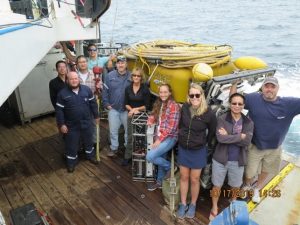
Funding Agencies
The National Ocean and Atmospheric Administration under Ocean Exploration and Research grant number NA18OAR0110352 funded this research.
Partners/Collaborators
This is a joint project with Woods Hole Oceanographic Institution (PI Dr. Aleck Wang), Florida State University (co-PI Dr. Sandra Brooke), and Florida Atlantic University (co-PI Dr. Mingshun Jiang)
We used LUMCON's R/V Point Sur and FIO's R/V Hogarth for our cruises, with Oceaneering's ROV Global Explorer.
